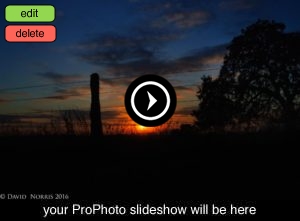The 1960’s were the golden age of the TV Western. Many of the shows were centered around large cattle ranches. Like other boys, the cowboys on TV were my heroes. I would often dream of living on the Barkley Ranch, from the Big Valley or the Ponderosa Ranch from Bonanza – alway wanted to be the youngest Cartwright son.
Ranching has played a major part of the history of Texas. As early the 1500s wild cattle from ranchos in central Mexico began wandering into territory which is now Texas. Cattle ranching began in Southern Texas in 1749, when Jose de Escandon, the governor of Nuevo Leon, brought 3,000 settlers and 146 soldiers to settle near the Rio Grande river (at that time known as the Rio Bravo). These were the first Spanish settlements in the area. Many Ranchos were established alone the river. These earlier settlers faced many hardships including the constant attack by hostile indians who also inhabited the area. The settlers had come from ranching communities in Mexico and were well versed in on raising cattle in similar arid areas. They also brought many traditions from their Spanish heritage that influenced Texas Ranch life. These settlements were the birthplace of the American cattle industry. The ranches grew into settlements, some becoming towns and cities.
The first land grants were long strips of land that began at the river and stretched inland on both sides of the Rio Grande – these were called porciones. This assured water supply for each of the landowners. Ranchers that moved further north into more arid brushy land received very large parcels of land to support there cattle herds. Ranchers organized their landholdings called haciendas, large estates. They engaged in many money-making businesses including lumber, raising sheep, farming, and mining. These hacienda became enclosed communities – large houses were built for the hacendado (ranch owner) and his family. Most were surrounded by stone wall for protection from the frequent attacks from Comanche and Apache tribes. The vaqueros (cowboys) and hacienda laborers and their families lived in one room huts called jacales
By the mid-1800’s , cattle ranching had become big business in Texas! Wealthy cattle barons like Charles Goodnight and Richard King were known coast to coast. The “hired hands”, unlike the tall, rugged, and swaggering cowboys that we saw on the big screen, were young men – white, African American, Hispanic, and sometimes female. They usually did not own the horse that they rode, but most did own a good saddle which they spent countless hours, both day and night, sitting on. If they were lucky to get steady work on a ranch they could make what would be equivalent today to about $300.00 a year. The ranch cowboy spent their day checking and mending fences, branding cattle, and moving cattle to grazing areas and water. At night they patrolled the ranch for cattle rustlers and wolves.
Many of these early ranches are still exist today including The King Ranch (established in 1853); The Waggoner Ranch (established in 1871); The O’Connor Ranch (established in 1834); The Jones Family Ranches (established in 1897); and many others.
Ranchers today know more about conservation then ranchers in the past. Drought in the 1950’s forced severe lessons in range management and an awareness of proper stocking rates, rotation grazing, reseeding, and new methods of brush control. Ranches are not only today still raising livestock many are set aside for recreational and conservation.
If you travel the backroads of Texas you are aware of the many ranches scattered throughout the state. As you past miles of fence lines and the ranch entrance – most identifying the ranch that lies beyond the gate.
Texans take pride in our history – The Cattle Ranch has played a large role in that history. As in the past, todays Texas Ranchers are hard at work caring and protecting the resources on their land. I have had the opportunity to tour a number of these ranches – it is amazing what is beyond the gates.
As a child I dreamed of eating grub at the chuck wagon after a long day of riding the range with Ben, Adam, Hoss, and Little Joe Cartwright. Actually the best part of the dream was living at the main house at the Ponderosa Ranch and eating some Hop Sing’s cooking. Although the Ponderosa was in Nevada, that dream for some is alive in Texas – Texas Ranches are a great investment.
Below are some additional resources:
www.ranchconnection.com – Cynthia Inman owner of Ranch Connection has been putting sellers and buyer together for over 30 years. Large or small, she is an expert in all aspects of Ranch transactions.
www.texaslandtrustcouncil.org – Texas Land Trust Council
www.texasagricuture.gov – Texas Department of Agricuture
www.nature.org – The Nature Conservancy
“Texas is the finest portion of the globe that has ever blessed by vision”. Sam Houston

 The 1960’s were the golden age of the TV Western. Many of the shows were centered around large cattle ranches. Like other boys, the cowboys on TV were my heroes. I would often dream of living on the Barkley Ranch, from the Big Valley or the Ponderosa Ranch from Bonanza – alway wanted to be the youngest Cartwright son.
The 1960’s were the golden age of the TV Western. Many of the shows were centered around large cattle ranches. Like other boys, the cowboys on TV were my heroes. I would often dream of living on the Barkley Ranch, from the Big Valley or the Ponderosa Ranch from Bonanza – alway wanted to be the youngest Cartwright son.